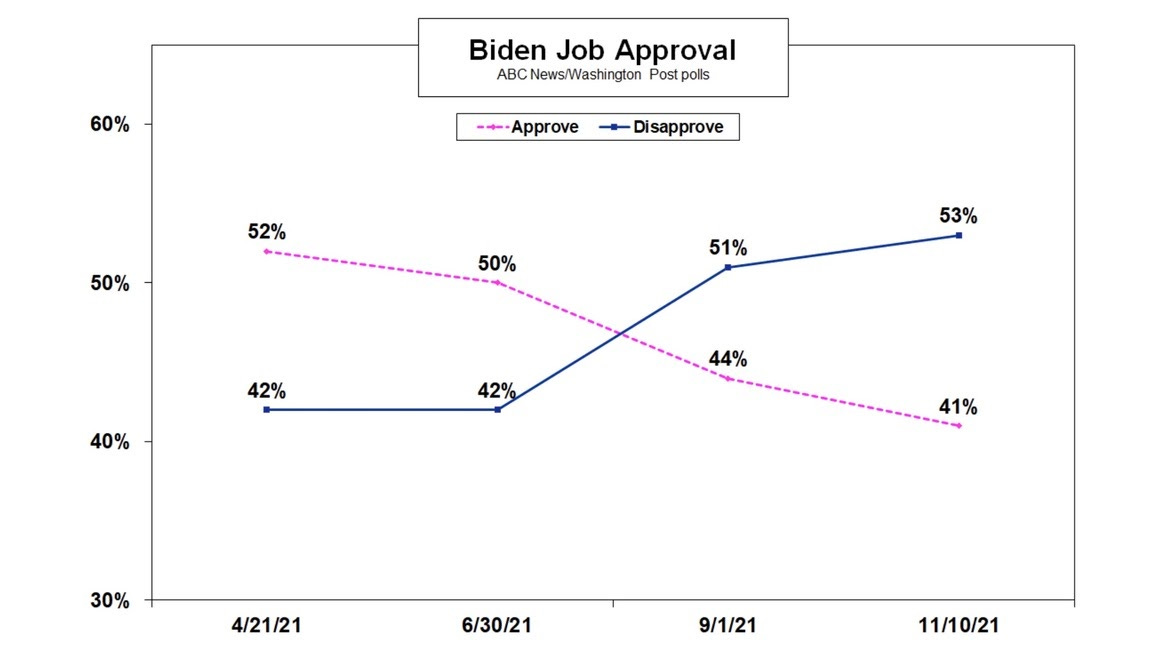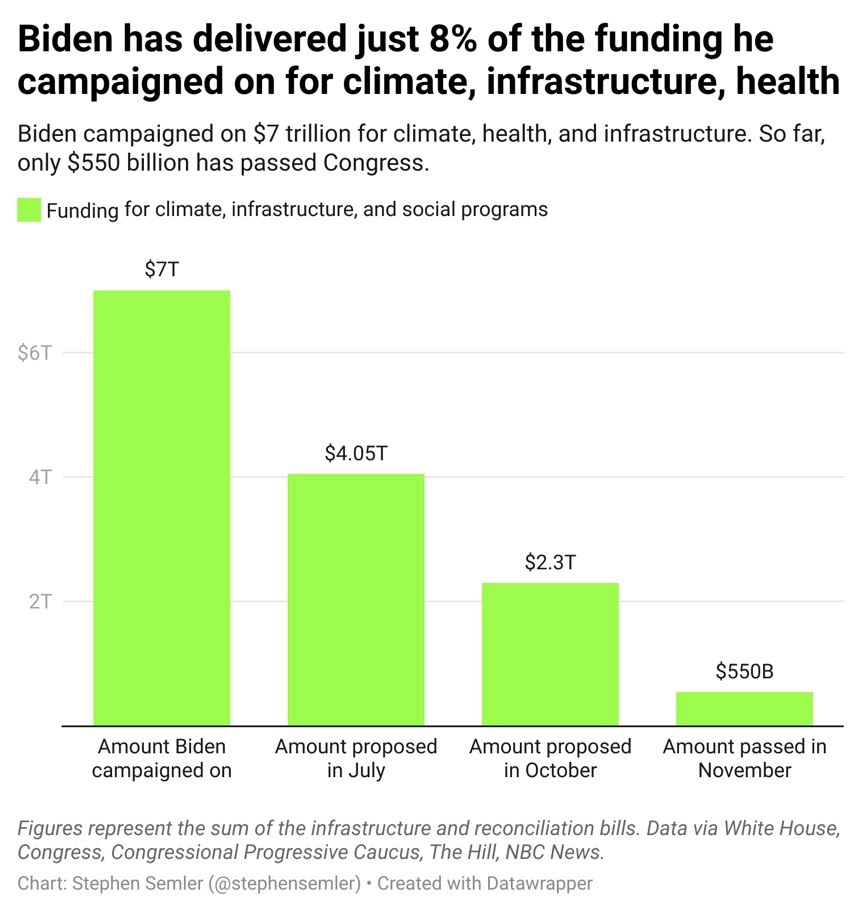Biden has delivered just 8% of the funding he campaigned on for climate, infrastructure, and health
Speaking Security Newsletter | Advisory Note for Organizers and Candidates, n°134 | 17 November 2021
If you find these notes useful, you can support this newsletter here and SPRI, here. Sharing these newsletters also helps. Thank you!
*I was on Rising again a couple weeks ago—you can watch the interview here. I talked a bit about the findings from this newsletter, which shows a breakdown of how Democrats want to spend public funds next year.
Situation
Biden’s approval rating is in the tank. In April, he had a 52-42 percent approval-disapproval rating; this month it’s 41-53, slightly worse than if those April numbers flipped.
That said, most Americans support Biden’s infrastructure and reconciliation legislation. By leaning into big, non-military spending programs, Biden can probably claw back some public support.
The problem is that one of Biden’s two main staple spending bills hasn’t passed yet and may not pass at all. If it does, it’ll only be half its original value, at most. The bill that did pass was 1) leverage to get the larger bill passed, and 2) itself gutted by over three-quarters. Biden’s earlier decision to split his domestic agenda into two bills is looking increasingly misguided.
Correlation: Biden cutting his agenda and approval rating
Biden campaigned on around $7 trillion worth of climate, infrastructure, and social programs to be spent over the next decade.
When Biden had a 52% approval rating, there was still hope Biden would deliver on that. When Biden polled at 41%, it became clear that Biden might only be able to get 8% of that funding through Congress.
A timeline of Biden’s agenda going from a $7 trillion promise to a $550 billion reality
In March, Biden announced a $2.25 trillion infrastructure plan. By the end of July, the infrastructure bill had been cut down to $550 billion.
With the infrastructure bill cut down as much as it was, the reconciliation bill would have to compensate. So in total, the reconciliation bill needed to be at least $6.45 trillion in order to fulfill Biden’s $7 trillion plan.
In August, Biden released the framework for a $3.5 trillion reconciliation bill. The framework housed provisions stripped from the infrastructure bill, like home care health care services and clean energy programs. Of course, the problem was it was still about $3 trillion short of the total number Biden campaigned on.
By the end of October, the $3.5 trillion reconciliation bill had been pared down to half its original value—$1.75 trillion—taking with it many popular social programs.
In early November, the House passed the $550 billion infrastructure bill.
By mid-November, neither the House nor the Senate has passed the $1.75 trillion reconciliation bill, and it’s in question whether either chamber ever will.
And here’s a blend of the two graphs above:
Thanks for your time,
Stephen (@stephensemler; stephen@securityreform.org)
Find this note useful? Please consider becoming a supporter of SPRI. Unlike establishment think tanks, we rely exclusively on small donations.






